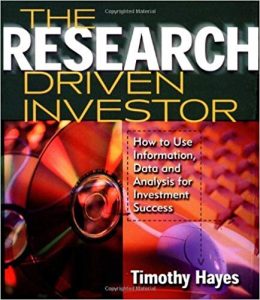Contents:
- Who is Johan Renck Wife? Bio, Age, Net Worth 2023
- Foto’s toevoegen voor Jesse Lauriston “Boy Plunger” Livermore
- Thông tin chung về Jesse Livermore
- Was Jesse Livermore a Day Trader?
- Tracey Lynn Livermore Net Worth 2023? Mother of a Daughter; Husband
- But Livermore always won … and the bucket shops took notice. They kicked him out repeatedly. He put on a beard.

He used to read newspapers and keenly study the financial pages by the age of five. His father pulled him out of the school when he was fourteen to do farming but Livermore had set his eyes elsewhere. There may have wrong or outdated info, if you find so, please let us know by leaving a comment below. Jesse Lauriston Livermore was an Entrepreneur who was born on July 26, 1877 in United States. In this article, we covered Jesse Lauriston Livermore’s net worth, wiki, bio, career, height, weight, pics, family, affairs, car, salary, age, facts, and other details in 2023.

Bitcoin “Speculative Chart” Suggests Cryptocurrency To Soon Blast off – NewsBTC
Bitcoin “Speculative Chart” Suggests Cryptocurrency To Soon Blast off.
Posted: Tue, 30 Nov 2021 08:00:00 GMT [source]
A rise above $60 would trigger an addition to the position at $63, for example. Failure to penetrate or hold above $60 would result in a liquidation of the long positions. The $2 buffer on the breakout in this example is not exact; the buffer will differ based on stock price and volatility. One wants a buffer between actual breakout and entry that allows them to get into the move early but will result in fewer false breakouts. Livermore traded on his own, using his own funds, his own system, and not trading anyone else’s capital.
Who is Johan Renck Wife? Bio, Age, Net Worth 2023
On September 14, 1900, age 23, he moved to New York, arriving in time for a strong bull market in stocks. He traded successfully, on the long side, at Harris, Hutton & Company stockbrokers, turning $10,000 into $50,000 in five days. In May 1901, he anticipated a correction and went short, using 400% margin. He lost his entire stake, as theticker tapewas not updated fast enough to make current trading decisions. Louis, where he was not known, and went back to betting at bucket shops. During that time, the Union Pacific stock was always going up and Jesse Livermore made $250,000.

San Francisco’s earthquake caused the market to fall. Later on, Livermore earned the largest sum of $1 million in just one day during the crash of 1907. His net worth rose to $3 million and his lifestyle became too lofty to maintain. Another misfortune was waiting for him when his dear friend Teddy Price betrayed him while trading cotton in the Chicago commodities market.
Foto’s toevoegen voor Jesse Lauriston “Boy Plunger” Livermore
To be profitable, a trader must actually create a profitable trading system, and then must adhere to it in actual trading. Livermore, who is the author of How to Trade in Stocks , was one of the greatest traders of all time. At his peak in 1929, Jesse Livermore was worth $100 million, which in today’s dollars roughly equates to $1.5 billion. Born in 1877, Jesse Livermore is one of the greatest traders that few people know about.

Thus, at age 20, Livermore moved to New York, where he continued his speculative trading as an individual. Livermore enjoyed many successes, but he also suffered from significant losses at various points. His career and life ended with his tragic suicide at the age of 63.
Thông tin chung về Jesse Livermore
Jesse lived until the age of 63, passing away on November 28, 1940. During his lifetime, Livermore gained and lost several multimillion-dollar fortunes. He sometimes played hunches, famously selling Union Pacific railroad short right before the 1906 San Francisco earthquake. Most notably, he was worth $3 million and $100 million after the 1907 and 1929 market crashes, respectively.
In the next several years, he continued betting at the bucket shops. He was eventually banned from most bucket shops for winning too much money from them. He then moved to New York City and devoted his energies towards trading in legitimate markets. This change would lead him to devise a new set of rules to trade the market.
Livermore would regularly beat the bucket shops and was eventually banned from them. He then devoted his energies towards trading in legitimate markets. This change would lead him to devise a new set of rules to beat the market. Livermore continued to make money in the bull markets of the 1920s.
- This change would lead him to devise a new set of rules to beat the market.
- Let the price dictate your actions and stay with profitable trades until there is good reason to exit the trade.
- He published his book, “How to Trade in Stocks,” in 1940.
- These were places where people would enter trades, but no actual trades were executed; they were betting against the house.
- Metz Noble was from a prominent Omaha family that had made a fortune in the Metz Brewery Company.
According to Rubython, his https://day-trading.info/‘s $7 million fortune had lulled him into a sense of comfort and killed the desperation to win he had in his youth. In 1940, Livermore’s book, “How to Trade in Stocks,” was published, though it was never as popular as Lefevre’s work. Had always been a problem child, drinking like his mother and sleeping with her friends.
Tracey Lynn Livermore Net Worth 2023? Mother of a Daughter; Husband
Without future ado, let’s learn more about Jesse Lauriston Livermore. During the boom, he was lionized by the press, during the bust he was attacked and vilified. He was the Michael Milken of the 1920s with one big difference – Jesse Livermore was a richer. As a speculator pure and simple, he made more money than any living human being and just as pure and simply, in the mean years of the early 1930s, he lost every single penny.
Towards the end of his life, Livermore lost his entire fortune and was living off of family annuities. The first few days after the break, prices should move in the breakout direction. In 1939, he opened a financial advisory business, selling a technical analysis system. Following the end of World War I, Livermore secretly cornered the market in cotton.
Being determined, keen, and bent on making a successful https://forexhistory.info/r, he started to learn about market trends. He bought his first share and earned a profit of $3.12 from $5 when he was just 15. He used to track the ticker numbers and concluded that there was nothing random there. Jesse left his job a year later and became a thorough professional trader at Boston’s bucket shop. But he caught the attention and was permanently banned from the Boston’s bucket shop. Children2Jesse Lauriston Livermore (July 26, 1877 – November 28, 1940) was an American stock trader.
So, patience and learning to read prices was the first lesson he taught to traders of the next generations. However, his third wife’s wealth supported him and he never felt an urgency to start trading. He published his book, “How to Trade in Stocks,” in 1940. Unfortunately, in the same year, the great Jesse Livermore shot himself. He was depressed and broken by the family misfortunes and tragedies.
P. Morgan, who had bailed out the entire New https://forexanalytics.info/ during the crash, requested him to refrain from further short selling. Livermore agreed and instead, profited from the rebound, boosting his net worth to $3 million. Jesse Livermore lived a life that has set a course for the trading Industry today. His knowledge and skills with investment were amazing and continue to amaze audiences and investors even today. One of the things to take back from Livermore’s investment tips is to never make emotional decisions and sell profitable stocks. Always sell the ones that are falling or have fallen in value.
The couple exchanged the wedding vows in an intimate wedding ceremony on 10th February 1995. Their private wedding ceremony is held in the presence of close family members and friends. They are married for almost 3 decades and are hoping for more. Through unknown mechanisms, he yet again lost much of his trading capital, accumulated through 1929. On March 28, 1933, Livermore married the 38 year old Harriet Metz Noble in Geneva, Illinois; there was no honeymoon. After devising his rules, he temporarily disregarded them in 1906.
He only liked trading in stocks that were moving in a trend, and he avoided ranging markets. When prices approached a pivotal point, he waited to see how they reacted. Despite the change in times, his rules still apply, and the price patterns he looked for are still very relevant today. We will look at a summary of the patterns Jesse traded, as well as his timing indicators and trading rules. The enormity of his success becomes even more staggering when considering that he traded on his own, using his own funds, his own system, and not trading anyone else’s capital in conjunction.

Comments